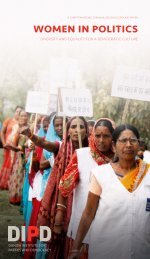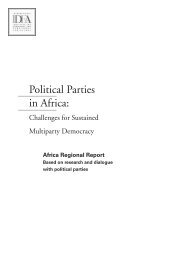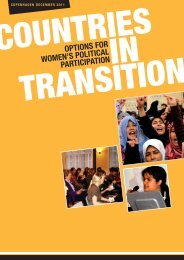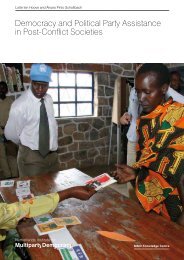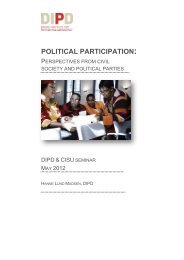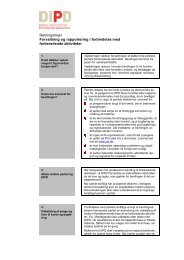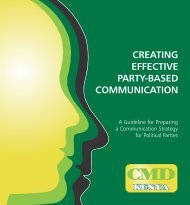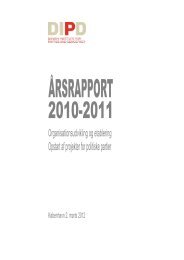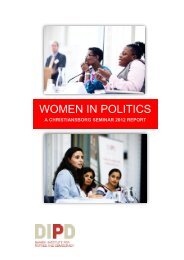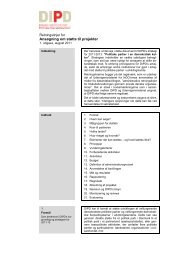FOLKETINGET – THE DANISH PARLIAMENT
FOLKETINGET – THE DANISH PARLIAMENT
FOLKETINGET – THE DANISH PARLIAMENT
Create successful ePaper yourself
Turn your PDF publications into a flip-book with our unique Google optimized e-Paper software.
ills and proposals for<br />
parliamentary resolution<br />
After the first reading of a Bill in the Chamber, the<br />
Bill is referred to a committee. The 25 standing<br />
committees read approximately 250 Bills and 200<br />
proposals for parliamentary resolution each year.<br />
Members of the committee in question examine<br />
the proposal and put questions to the Minister<br />
within whose sphere of competence the proposal<br />
comes. The questions are put in writing and<br />
therefore require a written reply. The committee<br />
may also ask a Minister to appear in the committee<br />
in order to answer questions orally in a<br />
consultation. Approximately 9.000 questions are<br />
put every year and approximately 13.000 committee<br />
papers are distributed every year.<br />
reports and accounts<br />
When a committee has finished dealing with a Bill,<br />
it submits a report. The report can comprise the<br />
following items:<br />
• Recommendations of the parties<br />
• Amendments to the Bill concerned<br />
• Statements by the parties explaining their<br />
attitude to the Bill and to the amendments<br />
• A description of the committee’s work on the Bill<br />
• A list of enquiries about the Bill.<br />
If committee material exists which is of special<br />
interest, the committee may have it printed in the<br />
form of annexes to the report. Instead of submitting<br />
a report, the committee can submit an<br />
account on the Bill, in case there is no wish to deal<br />
further with the Bill in the Chamber. A Bill becomes<br />
void if the Folketing has not finished dealing with<br />
it before the parliamentary year comes to an end.<br />
When the committee has submitted a report, the<br />
Bill is subjected to its second reading in the<br />
Chamber. Subsequently, the amendments are put<br />
to the vote. Then the Bill either passes on directly<br />
to the third reading or if a Member requests it, it is<br />
once more referred to the committee. The committee<br />
can then submit a supplementary report on the<br />
Bill or a so-called oral recommendation in the<br />
Chamber.<br />
commITTees <strong>–</strong> workshoPs oF The ParlIamenT<br />
21



